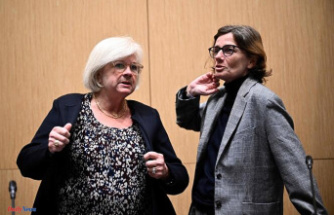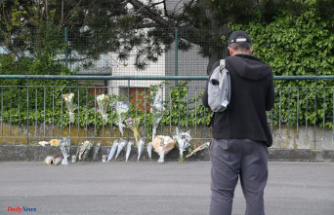The manual rejects expressions of the type: "all", "everyone", "todes" and reaffirms that the male is the gender is not marked
the former director of the Academy García de la Concha believes that the work will be "an important service to the" digital natives
The Royal Spanish Academy (RAE) and the Association of Academies of the Spanish Language (ASALE) have presented this Monday its first style manual in the Spanish language. This publication is unprecedented and is intended to serve as a practical guide to resolve any doubts arising from the developments in recent years have experienced certain issues of the orthographic, phonetic, or grammatical, and which today remain a source of confusion or controversy about their use.
Under the title Book of style of the Spanish language and the words according to the standard panhispánica, the work puts the focus on the spelling own of digital writing, that it "must not abandon, but embrace all the linguistic rules existing," explained the honorary director of the RAE), Víctor García de la Concha. In his first chapter, this new work insists, in the opinion of the institution, to reject the use of inclusive language, and consider it so unnecessary all the variables of inclusion of dual gender (as "all", "everyone", "todes" or "tod@s"). In addition, it makes clear that the male gender, "by being non-marking, can embrace the feminine in certain contexts".
The discussion of inclusive language is reopened last July, when the vice-president of the Government, Carmen Calvo, commissioned to RAE a report on the modification of the text of the Constitution so that, in his judgment, would reflect a greater parity between men and women.
Precisely, during the month of December, the Academy will discuss and approve, or not, the report cited. As Villanueva said in July, since the institution continue to consider that "the problem is to confuse grammar with the machismo" and announce that "there will be no major developments" in the face of the voting.. it Is very possible that the 'hot potato' will fall to his successor, as Villanueva leaves the post on December 13th, the day in which the scholars will meet to elect a new director.
García de la Concha, who was director of the Academy from 1998 to 2010, he has served as coordinator of this volume of 504 pages, which have been described as "an important service to the digital natives", able to "solve difficulties in the ordinary way eye-catching and focused", offering a "find fast" response mode "pills".
The idea of this project emerged with this century, that introduced a new way of reading through digital media and new combinations of text and image in devices, soon, the emitted light instead of receiving it as it had been in the paper. Specifically, the approach was made for the first time in 2001, in the II International Congress of the Spanish Language in Salamanca, the hand of the academic Francisco Rico.
The volume, published in a first print run of 10,000 copies and a price of 24,90 euros, includes one typographical errors of digital signals, and a glossary of terms such as tweet, yutubero or guasap. All this, while maintaining the principle of polycentric that the institution has been applying for decades with the goal of "improving the use of our common language, a language which is very widespread and with many modalities that need to be addressed", according to has explained its directorm Darío Villanueva.
According to the criteria of
Learn more Date Of Update: 01 December 2018, 20:00











